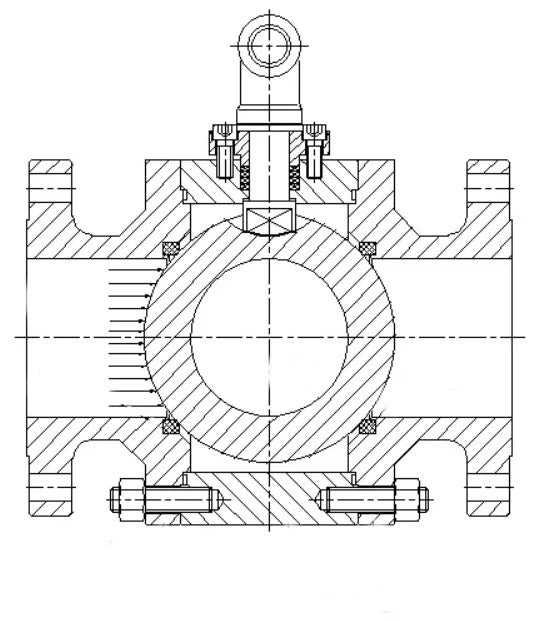Floating Ball Valve Definition
As the name suggests, a floating ball valve uses a ball as a structure to close the pipe cross-section and prevent fluid flow. The main characteristic of a floating ball valve is that the ball has no structure to support it, so it floats in the liquid and is held in place by the valve seats.
Standards for Floating Ball Valves
The. Construction standard API 608 /API6D
B. API 598/API6D Test Standard
w. API 607 fire protection standard
d. ASME B16.34 Wall Thickness Standard
Classification of floating ball valves
One Piece Floating Ball Valve
Monobloc ball valves and flanged gate valves belong to the same type of valve, the main difference between them being the closing element. Obviously, the one-piece ball valve uses a ball that rotates around the centerline of the body, while the flanged valve opens a type of gate by lifting the locking structure when the handle is turned. Ball valve is mainly used in pipelines to shut off the medium, distribute it and change the flow direction. Also called integrated ball valve, it is a new type of valve that has been widely used in recent years.
Two Piece Floating Ball Valve
The two-piece floating ball valve gets its name because it consists of two parts, the left and right bodies, which are connected together by threads and screws or by welding. This type of valve is suitable for different working conditions such as high temperature and high pressure.
Three Piece Floating Ball Valve
Three-piece floating ball valve is a floating ball valve whose body consists of three parts from left to right. The parts are usually a body and two hoods. Similar to two-piece floating ball valves, end caps are generally connected by threads and bolts by welding or flanging to the pipe.
Floating ball valve sealing principle
Because the ball of the floating ball valve is not restricted by any components, when the valve is closed, the medium is pushed from one end (upstream) of the valve, the ball can produce a certain displacement and firmly press the end sealing surface outlet (downstream) of the valve, thus creating an outlet seal. As shown in Figure 3
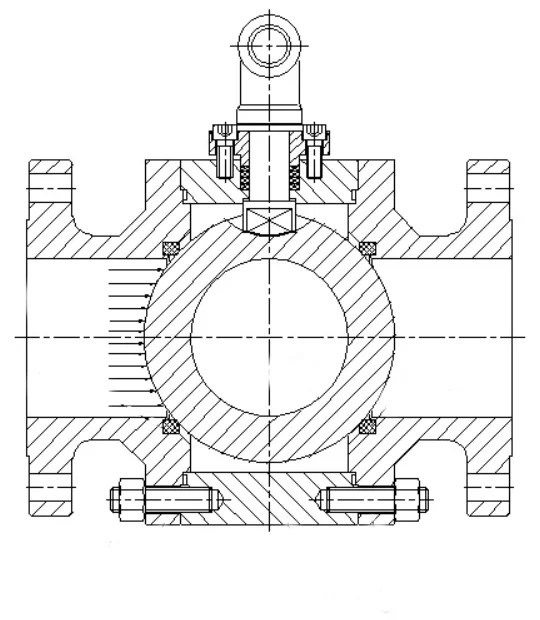
Resource structure
The. The valve status can be identified by the position of the handle. When it crosses the pipeline it is closed and when it is along the pipeline it is open.
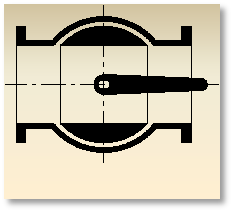
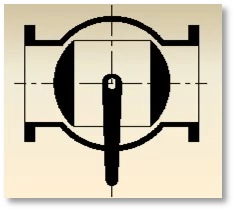
B. Misuse of the valve can be prevented by a locking device as shown in the graph.

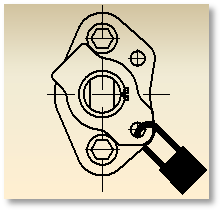
w. The valve is equipped with an anti-flight structure on the stem and the gasket can be replaced online.

(2”-300Lb and larger specs)
The bottom-mounted valve stem has a shoulder at the root of the stem. The outer diameter of the shaft shoulder is larger than the shaft hole

(Specifications smaller than 2”-300LB)
Top-mounted shaft with stuffing box structure in which the inner diameter of the stuffing box opening is smaller than the diameter of the shaft shoulder
d. Anti-static design is more suitable for flammable and explosive media.
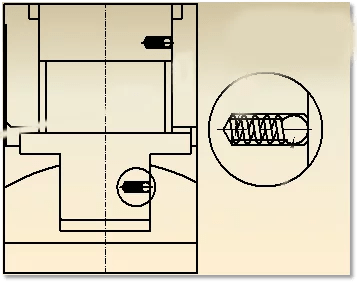
Dry valve, DC voltage not more than 12 V, resistance not more than 10 Ω
Since the filling material and bearings influence the conductivity, anti-static components such as stainless steel springs and stainless steel balls are provided between the valve stem and the valve body and between the valve stem and the ball.
It is. Fireproof design
① Valve seat (ball and valve body)
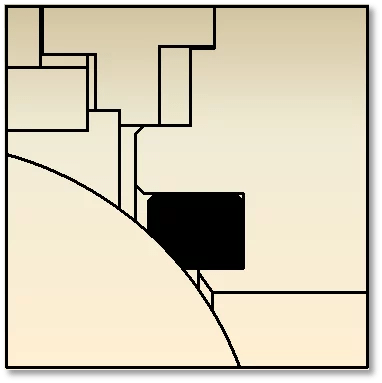
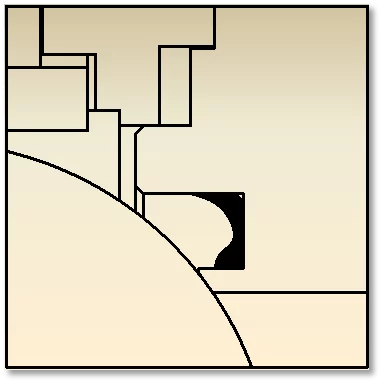
The valve seat is surrounded on three sides, and a fireproof sealing lip is attached to the side close to the flow channel, which can play the role of an emergency seal after the valve seat burns out.
② Center flange (valve body and valve cover)
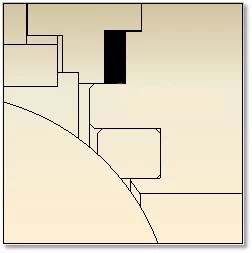
Sealing is via a fireproof stainless steel graphite spiral gasket and the structure utilizes metal-to-metal contact.
③ Packaging (shaft and body)
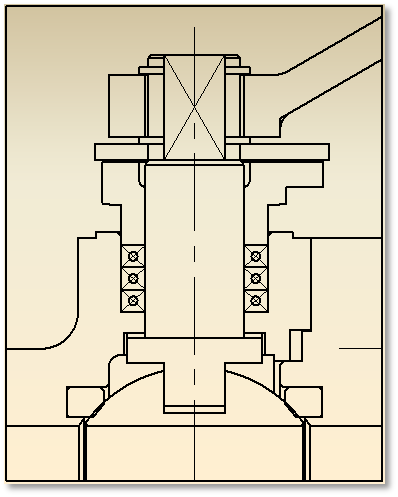
Multi-ring graphite gasket is used for sealing because graphite gasket can prevent medium leakage.
Different seal shapes suitable for different working conditions
Composite seal

• A valve seat is provided on the upstream and downstream sides of the valve and the valve seat is embedded in the valve body using a special press.
• The initial preload is guaranteed by the elasticity of the valve seat.
• The valve seats on the upstream and downstream sides are completely symmetrical and there is no restriction on the installation direction. It is a two-way valve.
• It is mainly used for applications with working conditions below 150°C (special material can reach 250°C)
• Offers the advantages of flexible operation and reliable sealing.
• Commonly used soft seal materials include: PTFE, RPTFE, NYLON, PPL, PEEK, etc.
Carbide Seal
• The upstream side of the valve is equipped with a seat assembly and the sealing surface is coated with carbide. The downstream side of the valve body is directly welded.
• The seat on the upstream side of the valve provides the initial sealing pressure required for the valve, the seat on the downstream side of the valve performs the primary sealing function, and the valve has a restricted installation direction.
• These seals are mainly used in applications with working conditions that include high temperatures and the presence of particles, dust, mud, etc.
• Offers the advantages of resistance to high temperatures, high pressure, wear and erosion while providing a reliable seal.
• Common surface coating material is Stellite carbide.
Soft seal
• Two valve seat components are provided on the upstream and downstream sides of the valve. Each valve seat component consists of a valve seat, a valve seat ring and a sealing ring. The valve seat ring is fixed to the valve seat by the sealing ring, and a sealing ring is arranged between the valve seat and the valve body type sealing ring. On the one hand, the valve seat and valve body are sealed, on the other hand, it can provide the initial preload of the valve.
• The two valve seats are completely symmetrical, the valve has no restrictions on the installation direction and is a bidirectional valve.
•The metal seal is the primary seal that serves to block most of the media and prevent particulate contaminants in the media from entering the soft seal surface. The soft seal is the secondary seal that serves to completely block the medium.
• These seals are mainly used in applications where working conditions include the presence of particles, dust, mud and other media at normal temperatures (below 150°C).
• It has the advantages of flexible operation, wear resistance and erosion resistance, long service life and is a reliable seal type.
• A type of rubber is generally used as material for soft seals (valve seat rings).
Advantages and Disadvantages of a Floating Ball Valve
Advantages of ball valves:
• The fluid resistance is low and the resistance coefficient is the same as that of the pipe section of the same length.
• It has simple structure, small size and light weight.
• It is watertight and reliable. Currently, plastic is the most commonly used material for the sealing surface of a ball valve because it has good sealing performance and is widely used in vacuum systems.
• Operation is easy thanks to the fast shutter speed. Rotation from fully open to fully closed position is up to 90 (degrees) for easy remote control.
Disadvantages of ball valves:
• The ball sealing surface is easily damaged and is not suitable for applications with working conditions where the medium contains particles.
• Soft seal valves are unsuitable for high temperatures and high pressures.
• Valves with rigid seals require high sealing forces and high torque to form the protective barrier.
Floating Ball Valve Selection Guide
The. The main pipeline for transporting oil and natural gas must be clean and underground. For underground pipes, we recommend choosing full diameter welded or flanged ball valves. For branch pipes, it is recommended to choose full diameter flanged or welded connections or a reduced diameter ball valve.
B. For pipelines of petroleum products and storage equipment, it is recommended to use flanged ball valves.
w. Floating ball valves with flange connection and internal thread are recommended for urban gas and natural gas pipelines.
d. Only oxygen enthalphatic valves should be used in the metallurgical oxygen piping system.
It is. When working with liquids at very low temperatures, it is recommended to select the low temperature ball valve with valve cover
f. Oil refinery catalytic cracking plant piping system can be used with lifting rod ball valve.
G. In piping devices and systems for corrosive media such as acids and alkalis in the chemical industry, it makes sense to select stainless steel ball valves made of austenitic stainless steel with polytetrafluoroethylene as the seat ring.
H. Ball valves with metal seals can be used in piping systems or equipment that operate at high temperatures in metallurgical systems, power systems, petrochemical plants and district heating systems.
I. When flow adjustment is required, a helical gear or a pneumatically or electrically adjustable ball valve with V-shaped opening can be selected.
As there are many different types of valves on the market, it is important to understand the differences to select the valve best suited to your application.
Floating ball valves are ball valves in which the locking system remains floating. This means that they have a very simple design and operation and can therefore be used in applications where the most important factors are the speed of opening or closing the flow, the ease of changing the flow direction or the ease of installation.
If there are more complex requirements, such as: For reasons such as greater resistance to aggressive environments, high temperatures and high pressures, other designs must be considered. Perhaps a two- or three-piece design would be a better idea, with the type of fence being another important factor that influences the decision in these cases.
If you follow the guidelines listed above, choosing one shouldn't be much of a problem. However, it is recommended to consult a professional about NTGD valves. Floating ball valve manufacturer when in doubt, to avoid additional purchases or additional costs due to replacing valves that do not meet application requirements.
The main features of floating ball valve are compact structure, reliable sealing, simple construction and easy maintenance.

